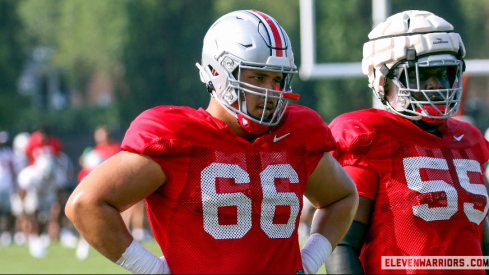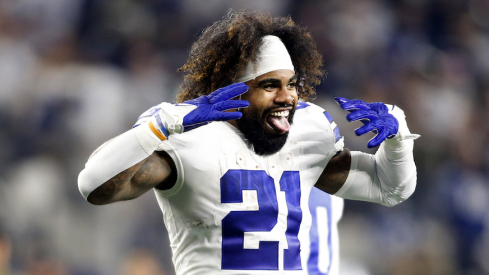
I wrap-up my review of Ohio State's defensive positions by examining the defensive backfield. Unlike Ohio State's front seven, the Ohio State secondary -- including the Star nickel back position I discussed last week -- almost align themselves to the field, not the offensive formation.
In other words, the secondary will line-up their strength to the wide side of the field.

When the offense is on a hashmark, the Buckeyes' field corner, strong safety and Star go to the wide side, while the free safety and boundary corner align to the boundary.
Each corner has somewhat different responsibilties. Perhaps counter-intuitively, OSU generally puts their best corner to the boundary. This is because a defense's coverage generally rolls to the wide-side. A boundary corner needs to be able to play more man coverage with less support. The boundary corner also needs to be physical and apply himself in the run game, as he can be the defense's force player to the field's short-side. For instance, OSU likes playing quarter-quarter-half coverage in early downs. As the name indicates, the defense plays cover 4 to the wide field and cover 2 to the boundary.

The coverage allows the defense to favor the wide side but puts a lot of pressure on the boundary corner. He is placed in a jam position against the wide receiver on the line of scrimmage, and a force player on run action to his side.

Fortunately for Ohio State, they have a well-cast boundary corner in Bradley Roby (assuming his legal allegations do not cause him to miss significant time). Roby is a physical corner, permitting OSU to use him in force support. OSU can rely upon him solely cover the underneath bounding, allowing the defense to provide additional coverage support to its other secondary members. Playing from this spot allows Roby to make an impact even if teams attempt to move their best wide receivers away from him, as he can be a presence against an opponent's run game.
To the Field
The field corner, meanwhile, is theoretically responsible for more territory but also has help. The field corner will tend to play more off-coverage, have less of a run-support role, and have more safety and/or linebacker coverage help. The field corner also has a bit more license to jump routes, given that coverage is often rolled his way. The difference between the boundary and field corner, however, is more of a gradation than a chasm. The field corner must still be able to play man coverage on the outside wide receiver, whether it be in cover 1 or cover 4.
The new field corner for 2013 will be Doran Grant, barring some unforeseen circumstance. As I wrote this spring
Doran Grant also has looked strong at the wide-side corner. Grant played well last year when given the opportunity and has picked up where he left off. He is a physical corner who also does a nice job making plays on the football. Grant is well ahead of the younger corners and I would be very surprised if he is not starting this fall.
Strength up the Middle
Urban Meyer often likes to state that, as in baseball, a good football team starts by being strong up the middle. The 2013 Buckeyes are in a good situation to meet this metric -- at least at the safety position -- with multiple year starters CJ Barnett and Christian Bryant. Barnett is the strong safety and Bryant the free safety. Again, there are as many similarities as differences between the spots. For instance, both have similar responsibilities in cover 4 -- read the number 2 receiver and come up in run support or play pattern-match coverage in their zone depending upon that read.

But differences also exist. The strong-safety plays to the field. In most coverages he is more immediately involved in run support. The Buckeyes often bring Barnett in the box in run downs.
With the star functioning as the force player, the strong safety is responsible for quickly coming up to attack the wide-side alley. Finally, the strong safety is more likely to play man coaverage, often responsible for an offense's tight end or slot receiver.
The free safety, by contrast, is more often responsible for playing deep half or middle of the field coverage. He must come up from this spot to break up pass plays or provide inside-out run support. Commentators last season discussed whether Bryant should fill the hole at Star in nickel situations, but the position involves very different responsibilities and the Buckeye coaching staff clearly wanted Bryant to become more comfortable in his free safety role. This paid dividends as the season progressed.
The Buckeyes' secondary is unquestionably Ohio State's most experienced defensive unit and should be the defense's strength this fall.

